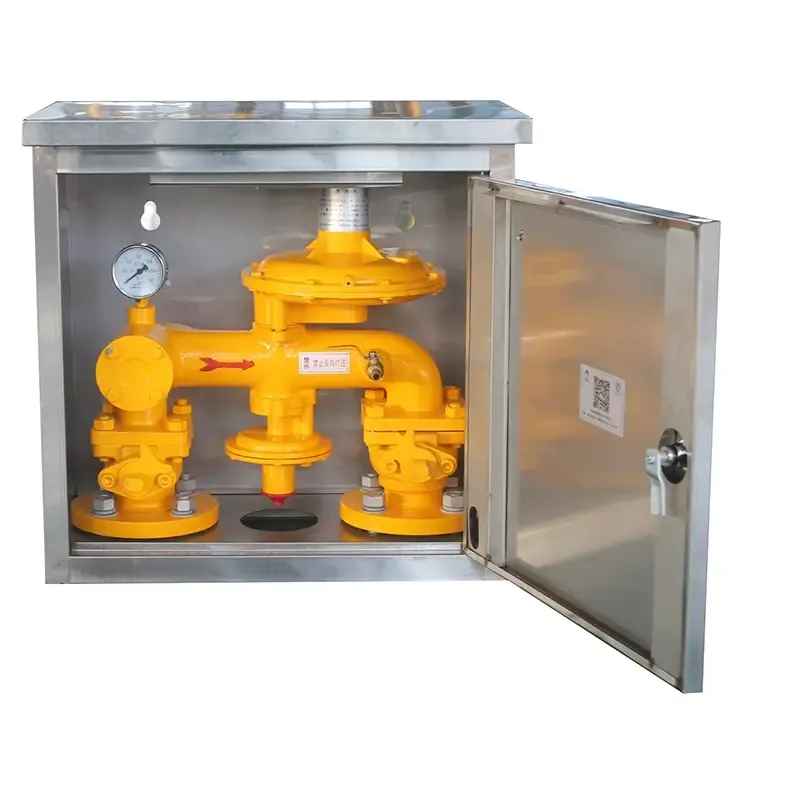
Oct . 12, 2024 16:31
Back to list
مخفض ضغط الغاز
Understanding Gas Pressure Regulators Essential Components for Safe and Efficient Gas Usage
Gas pressure regulators are vital components used in various industries and applications to ensure the safe and efficient use of gases. These devices control the pressure of gas flowing from a high-pressure source to a lower pressure where it can be utilized for various applications, including heating, cooking, and industrial processes.
What is a Gas Pressure Regulator?
A gas pressure regulator is a mechanical device that automatically maintains a constant outlet pressure despite fluctuations in the inlet pressure or variations in the flow rate. It reduces the pressure of gas from a supply source—such as a pipeline or gas cylinder—to a usable level that meets the requirements of the downstream equipment.
How Does a Gas Pressure Regulator Work?
The operation of a gas pressure regulator involves several key components, including the diaphragm, spring, and valve. When gas enters the regulator, it exerts pressure on the diaphragm. The diaphragm’s movement causes a valve to open or close, which in turn adjusts the flow of gas to the outlet. By regulating the position of the valve, the regulator can maintain a consistent outlet pressure.
The spring provides the necessary force to return the diaphragm to its original position when the gas pressure decreases. This dynamic balancing act allows the regulator to respond quickly to changes in pressure, ensuring that the gas supplied to appliances or equipment remains within safe and operational parameters.
.
There are several types of gas pressure regulators, each designed for specific applications and types of gases. The most common types include
مخفض ضغط الغاز

1. Single-Stage Regulators These regulators reduce high inlet pressure to a lower outlet pressure in one step. They are typically used in applications where the inlet pressure is relatively stable, such as in small gas cylinders.
2. Two-Stage Regulators These devices provide a more stable outlet pressure by reducing the pressure in two steps. The first stage reduces the high inlet pressure to an intermediate pressure, and the second stage further reduces this pressure to the desired outlet level. This type is ideal for applications where inlet pressure can vary significantly.
3. Adjustable Regulators These regulators allow users to manually adjust the outlet pressure to suit specific needs. They are commonly used in laboratories and industrial settings where precise control of gas pressure is essential.
4. Back Pressure Regulators These are used to maintain a specific pressure in a system by diverting excess gas back to the inlet when the pressure exceeds a set limit. They are commonly found in chemical processes and gas distribution systems.
Applications of Gas Pressure Regulators
Gas pressure regulators find applications across a wide range of industries. Some common uses include
- Residential Cooking and Heating In homes, gas pressure regulators ensure that the gas supplied to stoves, ovens, and heaters is at the correct pressure for safe and efficient operation. - Industrial Manufacturing Many manufacturing processes require specific gas pressures for optimal performance, making reliable regulators essential in these environments. - Medical Facilities Hospitals use gas pressure regulators for medical gases including oxygen and nitrous oxide, ensuring that the correct pressures are maintained for patient safety and effective treatment. - Welding In welding applications, proper gas pressure is crucial to achieve high-quality welds, necessitating the use of reliable gas pressure regulators.
Conclusion
Gas pressure regulators play a critical role in managing gas pressure across a multitude of applications. By ensuring safe and consistent gas delivery, these devices enhance operational efficiency and prevent accidents related to gas usage. With advances in technology, modern regulators continue to evolve, offering even greater precision and reliability to meet the demands of various industries. Understanding how these regulators work and their significance can help users better appreciate their importance in everyday applications.
Next:
Latest news
-
Safety Valve Spring-Loaded Design Overpressure ProtectionNewsJul.25,2025
-
Precision Voltage Regulator AC5 Accuracy Grade PerformanceNewsJul.25,2025
-
Natural Gas Pressure Regulating Skid Industrial Pipeline ApplicationsNewsJul.25,2025
-
Natural Gas Filter Stainless Steel Mesh Element DesignNewsJul.25,2025
-
Gas Pressure Regulator Valve Direct-Acting Spring-Loaded DesignNewsJul.25,2025
-
Decompression Equipment Multi-Stage Heat Exchange System DesignNewsJul.25,2025

